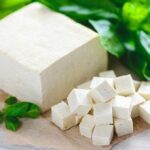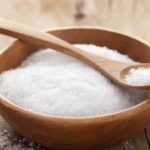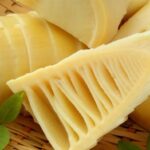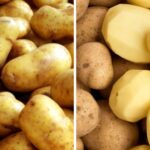Itchiness while peeling water yam is a common issue faced by many, causing discomfort during food preparation. Finding a solution to this problem is essential, not only to minimize the irritation but also to protect the health of the cooks. The main cause of this itching is the presence of saponin, a natural compound that can irritate the skin. When peeling water yam, saponin is released and comes into contact with the skin, leading to an itchy feeling. Additionally, factors such as skin sensitivity, exposure time to water yam, and individual health conditions can also increase the intensity of the itch. Therefore, understanding and applying preventive measures are necessary to minimize this inconvenience.
**Peel water yam with dry hands and dry yam**
To reduce itchiness when peeling water yam, one of the most effective measures is to keep your hands completely dry before starting. Firstly, when buying yams, avoid washing them immediately as this will increase their moisture content. Carefully dry your hands, and only then start peeling. After finishing, to minimize the risk of itching, you can soak the yams in a dilute salt water solution for about 10 minutes. Finally, rinse the yams again and let them air dry before cooking. This method will not only help you avoid discomfort but also keep the yams cleaner.
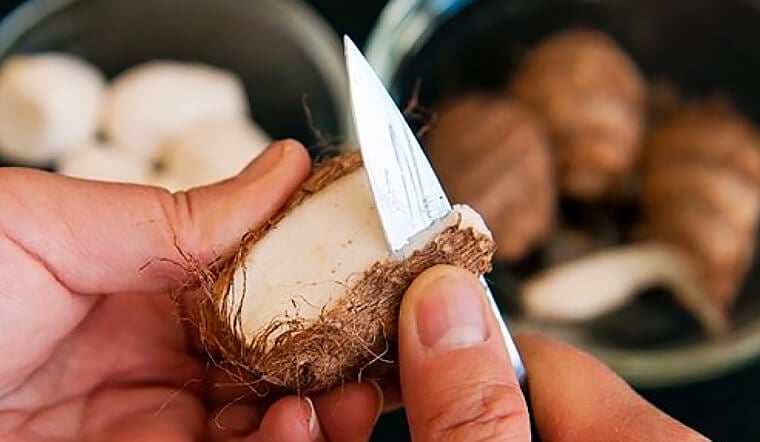
Peel water yam with dry hands and dry yam
**Soak water yam in dilute salt water before peeling**
Before peeling water yam, a useful tip is to soak the tubers in salt water for 15 to 20 minutes. This not only helps remove dirt but also significantly reduces the amount of oxalate and raphide present in the skin. As a result, the irritating effect on the skin is minimized, allowing you to peel the yam comfortably without worrying about itching. This simple step can bring significant benefits during the preparation process.
**Blanch water yam before peeling**
Another effective way to treat water yam before peeling is to blanch it. Simply place the yam in a pot, add about two teaspoons of salt, and add just enough water to cover the yam. Then, turn on the heat to high and blanch for around 10 minutes. The high temperature will help break down the yam’s resin, making peeling easier. Once the yam is cooked, immediately transfer it to a bowl of cold water to stop the cooking process, and then simply peel off the skin. This method not only makes peeling easier but also reduces skin irritation.
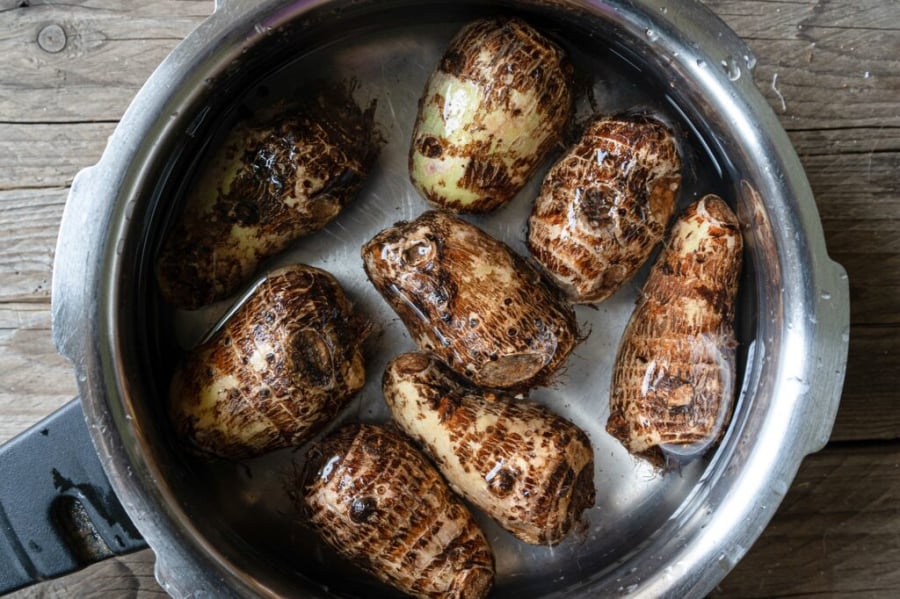
Blanch water yam before peeling
**Wear gloves while peeling**
To avoid itching when peeling water yam, you can use nylon gloves or cloth gloves. Nylon gloves are very convenient as they can be easily discarded after use without the need for washing. On the other hand, cloth gloves offer a dual benefit: they protect your hands from the yam’s resin and are more environmentally friendly, reducing waste generation. The choice between these two types of gloves depends on your needs and environmental consciousness.
**Light roast the water yam before peeling**
A simple way to peel water yam without itching is to lightly roast it first. Carefully wrap each tuber in foil and place them on a grill for about 2 to 3 minutes. This process will help remove the resin from the yam. Once the roasting is complete, simply peel off the foil and the yam’s skin, which should now be much easier and itch-free.
5 Vegetables You Should Parboil to Remove Toxins and Ensure Family Health
In cooking, not all vegetables can be prepared as is; some may contain harmful substances that can be detrimental to our health. It is imperative to understand the intricacies of each vegetable and the potential toxins they may harbor. By doing so, we can ensure that our culinary creations are not only delicious but also safe and nourishing.

























